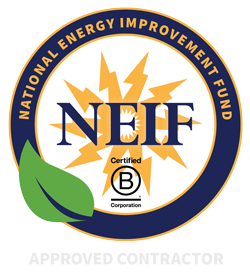7 Essential Furnace Parts
- Heating

If you’re like most homeowners, you know that your furnace is responsible for heating your house. How it does this, however, is a mystery to the general population. When your furnace stops working however, it’s important to have a basic understanding of how it operates in order to try simple troubleshooting and (if needed) understand what your HVAC technician needs to do in order to get it fixed.
If you don’t understand how your furnace works, regular maintenance can become a real challenge. Poorly maintained furnaces have a tendency to accumulate more dirt and dust, making other issues much worse and accelerating the degradation of some parts. When a technician is called, not understanding how your furnace works makes it more difficult to understand what type of work needs to be done immediately.
Educating yourself on the basic components of a furnace isn’t too difficult, and it will make it easier to maintain your unit, saving you a lot of money over the next several years.
1. Thermostat
Your thermostat is able to detect the temperature in a room and determine if that temperature is below the level you have set. When the temperature is lower than the one you have set, the thermostat sends an electrical signal to the burner to turn on.
2. Pilot Light
On a gas furnace, this is a small flame that is always burning a small amount of excess gas. In an electric furnace, the pilot light is lit by an electronic ignition when it’s time for the furnace to turn on. If the pilot light becomes blocked by debris, however, the flame will die out. When this happens, turn off the gas (or turn off an electric furnace at the breaker) and use a small brush to clean the pilot light. In most modern furnaces, the pilot light will come back on automatically when the power or gas is restored. If the pilot light valve is clear but the light still isn’t coming back on, have a professional check for gas leaks. On an electric furnace, a professional can diagnose whether or not there is a problem with the ignition switch or the pilot light itself.
3. Burner
In a gas furnace, the burner is activated by the pilot light. In an electric furnace, this is done with an electric ignition. The burner creates heat inside a combustion chamber, which in turn creates heat in the heat exchanger. When this component is broken, it will not heat the air. In some cases, this may mean that the air is taking a longer amount of time than usual to heat, while in other cases the air may not heat at all.
4. Heat Exchanger
Air is pulled into the heat exchanger and heated. Cold air is replaced by the warm air created by the burner. This warm air is then pushed into a long tube or pipe by the blower motor.
5. Blower motor
The blower motor is a component of the furnace that is responsible for pushing the warm air through the ductwork and out of the vents. These motors are typically sized in accordance with the size and layout of the home they need to heat. Larger motors are used in homes where the air needs to travel long distances. In some cases, more than one blower motor is installed as part of a heating system in order to force air through particularly long distances. As this component starts to break down, the furnace will still produce warm air, but there is a noticeable temperature difference between vents located close to the furnace and those located farther away. In the event of a total breakdown, there will be virtually no air coming out of vents that are far away from the furnace.
6. Furnace Belt
In order to blow the warm air through the house, the blower motor will turn a belt known as the furnace or blower belt. much like similar belts in your car or vacuum cleaner, these belts will wear out over time. A loud squeaking or squealing from the blower motor is usually an indication that the belt needs to be replaced. If your motor is easily accessible, this is often just a matter of turning off the power, removing the old belt with a wrench or screwdriver, and replacing it with a new part. If you cannot access or remove the old belt, however, call a professional.
7. Vents
After being pushed through the ducts, the warm air comes out of the vents located throughout the house. To help air flow, make sure that these vents are kept clear of dust and are not blocked by furniture or other items.
For More Information on Furnaces of All Shapes and Sizes, Call NSHEC Today!
Contact North Shore Home Energy Today!
Check Out Our Current Specials!
Read The Great Things That Your Neighbors Are Saying About NSHEC.





